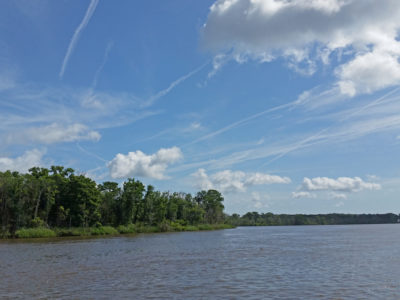
Estuaries Play an Outsized Role in the Global Carbon Budget
Estuaries Play an Outsized Role in the Global Carbon Budget
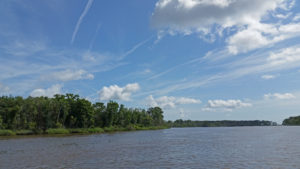
Although estuaries are small in area, they play an outsized role in the global carbon budget.
Credit: Steven Pennings
Estuaries are net sources of CO2 to the atmosphere and coastal ocean, and net sinks for oceanic and atmospheric O2. This finding challenges the simplistic treatment of estuaries in global carbon models, and suggests that interactions between river discharge, changes in marsh area, and increasing atmospheric CO2 will alter shelf-ocean carbon exchange in the future.
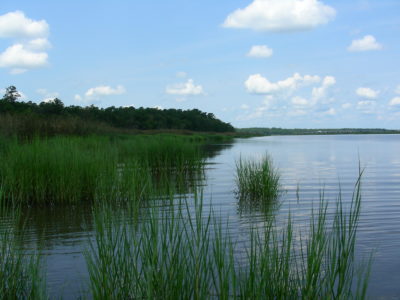
Ammonia Oxidizers Transform the Nitrogen Cycle
Ammonia Oxidizers Transform the Nitrogen Cycle
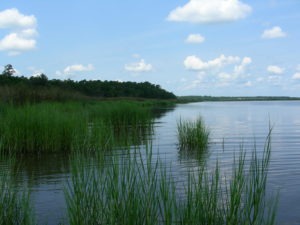
Ammonia oxidizing archaea peak in the summer and play a previously-unknown role in driving estuarine nitrogen cycling.
Credit: Kazimierz Wieski
Ammonia-oxidizing archaea (AOA) convert ammonium into nitrite, but little is known about the population dynamics of this relatively new addition to the nitrogen cycle. Research from GCE LTER found that mid summer blooms of AOA coincide with a peak in nitrite concentration. Field data from 29 estuaries showed similar summer peaks in nitrite, suggesting that summer blooms of AOA are widespread and play a previously unrecognized role in driving estuarine nitrogen cycling.
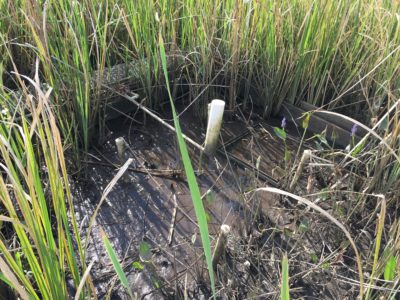
Sea Level Rise Alters Wetland Function
Sea Level Rise Alters Wetland Function
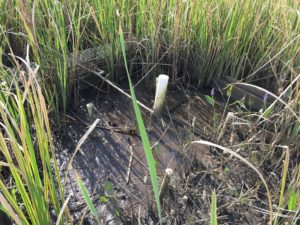
A long-term experiment at the GCE LTER revealed that rising sea levels would negatively affect tidal freshwater marshes.
Credit: Steven Pennings
Sea level rise is expected to cause salt marshes to extend upstream at the expense of freshwater wetlands, dramatically altering the intertidal landscape. Experimental salinization reduces primary production, reduces plant species diversity, decreases respiration, and leads to loss of marsh elevation.
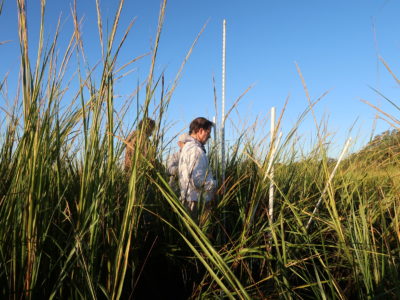
River Flow Supports Marsh Production
River Flow Supports Marsh Production
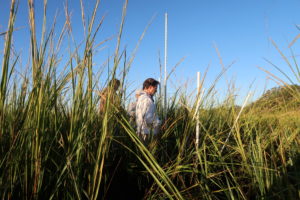
Long-term monitoring of salt marsh plant production revealed the role of river flow.
Credit: Andy Penninman
Long term monitoring, remote sensing, and field experiments showed that dominant estuarine plants grow up to 3 times better in years with low salinities, and that salinity is driven most strongly by river discharge. A high frequency of drought in 1998-2012 led to declines in plant biomass relative to the 28-year period of record for Landsat 8.
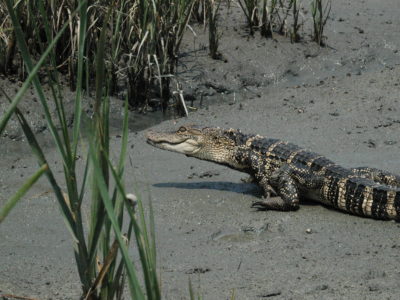
Mobile Predators Structure Communities
Mobile Predators Structure Communities
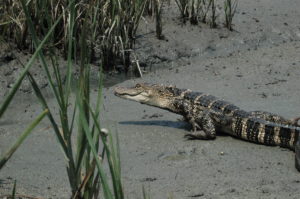
Alligators are one of several mobile apex predators in southeastern estuaries.
Credit: James Nifong
Mobile predators like alligators move between fresh and marine habitats, consume a variety of estuarine prey, and alter the behavior of intermediate predators such as blue crabs. A predator exclusion experiment initiated in 2016 indicated that blue crabs and large fish alter the abundance of marsh invertebrates such as snails and fiddler crabs, which in turn mediate plant production and soil biogeochemistry.










